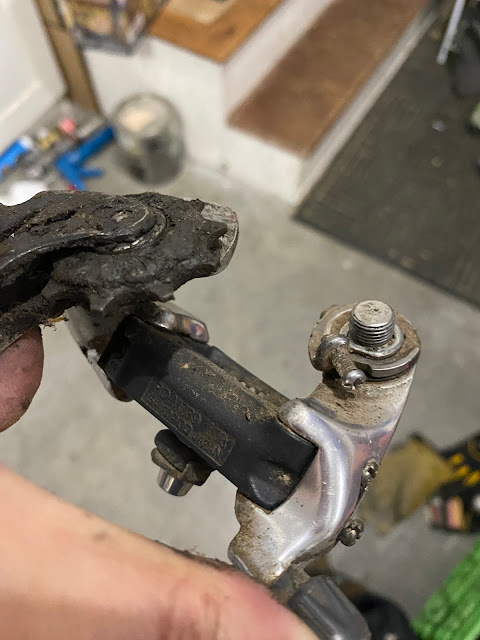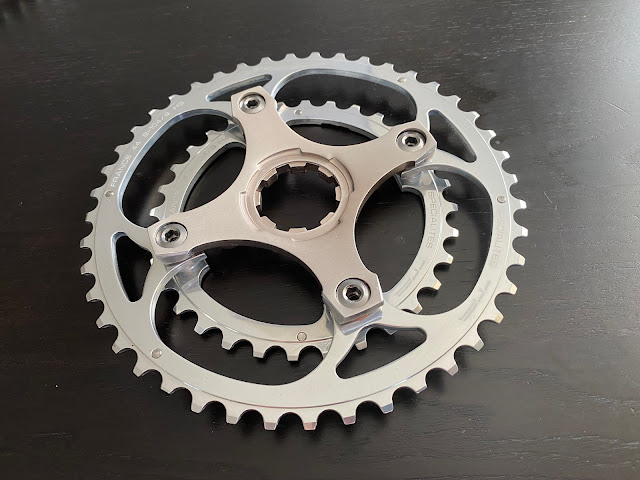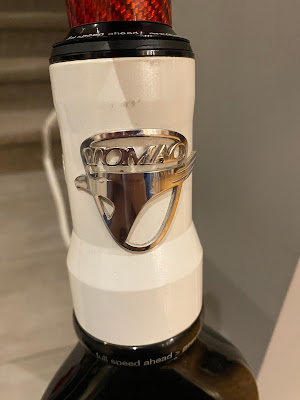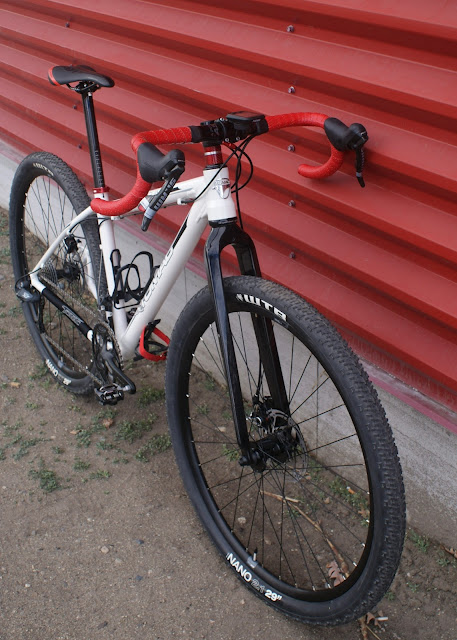.jpeg) |
| 1990 Giant Cadex 980C |
*dates indicated are estimated years of production, not introduction of product.
*any inaccuracies are unintentional and any feedback or corrections are welcomed.
BACKGROUND:
The lugged carbon fibre road bicycles of the late 80’s to 90’s have an undeniable appeal despite being wholly replaced by more modern methods of construction. The appeal is equal parts nostalgia and aesthetic, but an additional factor is owning a bike which at one time was considered state of the art in terms of weight and materials. Granted, there were even earlier carbon frames but they were largely prototypes like the Carlton (1971) or had limited production runs, such as the Mossberg Road X-1000 (1973), and Exxon / Graftek G-1 (1975). For the most part, the production bikes were typically constructed of carbon fibre tubes bonded into aluminum lugs, and included such iconic models like the Vitus Plus Carbone / Carbone 3 (1983), the Alan Record Carbonio (1984?), the Peugeot PY-10FC (1983), and the TVT / Look KG 86 (1986). At the time, these bikes were exotic superbikes for the pro peloton and certainly out of reach of a neophyte on a budget. Then came the Giant Cadex 980C, which was introduced in 1987 and available for the market in 1989.
The Giant Cadex 980C was one of a wave of bicycles regarded as “carbon for the masses”. Others were the Miyata Carbon Tech models (1987), the Trek 2500 (1987), the Specialized Allez Epic (1988/89), and the Centurion Ironman Carbon (carbon-wrapped aluminum for main tubes; 1988). Now carbon became (somewhat) affordable to Joe Public. I remember a few of us gathered around a 980C at a shop. Older, wiser heads decried the new technology:
“It’s ugly.”
“It’s gonna snap in half. A guy I know heard that it happened to his 3rd cousin’s riding buddy…!”
“It’s crazy light….too light.”
“It’s GLUED?!!!”
I nodded my head in agreement, but privately, I had a sense of wonderment. The whole thing was hyped by equal parts science and mysticism. I remember a Miyata catalog throwing around terms like “amorphous metal reinforcement” and “stronger than steel”, and touted cool graphs and charts showing how carbon fibre was better. My science geek brain bought in.
But, alas, the wage of a shop rat did not match up with the lure of carbon. I saved up and raced on a very nice Marinoni Columbus SL frame, then on a Marinoni Columbus SLX, then on a 2nd generation bonded Trek 2000 aluminum; but after a few years, bonding technology was more-or-less done by monocoque construction. Step forward a few decades, dozens of bikes later, and a few pounds heavier later to 2022, and I am on a 2013 Giant Advanced SL ISP frame. It’s a much better bike than I really need for going on a ride or two a week with a buddies followed by a good coffee and talk session.
Yet when a Giant Cadex 980C came up on my local market for a fair deal, I couldn't resist the allure. The original owner bought it during the 90’s triathlon boom, but only used it off and on over the years. There were some normal use clearcoat chips and some nicks and scratches, but the bike hadn’t been abused. Getting it home, I could see it was a 1990 production year 980C, with the “Giant” logo in red text with a blue text shadow - this was supported by serial number # GL002876 (see “CADEX 980C MODELS & SERIAL NUMBERS:” below). The bike came more-or-less fully stock with a fully functional Shimano 105 SC groupset, but I wanted to go Neo-Retro.
Originally, I was planning to go in an all-carbon direction, but after stripping it down to the frame, the phrase “carbon for the masses” stuck in my mind. The challenge was to use more modern parts for improved functionality, but stick to OEM pieces (“components for the masses”) while showcasing the frame’s old-school carbon tubes and aluminum lugs. I used a few colour-anodized parts to emphasize the carbon/aluminum/red/blue colour scheme, but tried to keep it simple.
PHOTO GALLERY:
.jpeg)
.jpeg)
.jpeg)
.jpeg)
.jpeg)
.jpeg)
.jpeg)
.jpeg)
SPECIFICATIONS:
Frame: 1990 Giant Cadex 980C
Fork: Giant Alloy CAD aluminum
Headset: Tange Vantage
Stem: generic 1” quill with removable faceplate
Handlebar: MEC compact
Seatpost: generic carbon
Seat: Giant Contact Neutral
Crankset: Shimano FC-M565 non-series compact
Shifter: Shimano Sora ST-R3000
Front Derailleur: Shimano Sora RD-R3000-SS
Rear Derailleur: Shimano Sora FD-R3000-F
Brakes: Tektro 540 dual pivot
Wheels: Ritchey Aero OCR Pro rims, Ritchey Zero System hubs, black aero spokes
Cassette: Shimano CS-6500 Ultegra
Pedals: Wellgo Xpedo XRF07MG Magnesium
CADEX 980C MODELS & SERIAL NUMBERS:
In my opinion, and without claiming to be definitive, there appears to be three models of the Cadex 980C manufactured with some production year overlaps before being replaced by the later CFR models:
- 1989-90 (1st generation): White lettering w/red shadow, multi-coloured geometric shapes, “Cadex” on the wishbone, original “G” Giant logo on the head tube, requires a clamp-on front derailleur.
- 1990-? (2nd generation?): Red lettering w/white shadow, “Cadex” on the wishbone, second “G” Giant logo on the head tube (inverted triangle, red/white/black), braze-on front derailleur mount.
- 1990-91 (3rd generation?): Red lettering w/blue shadow, “Giant” on the wishbone, wave “G” Giant logo on the head tube (inverted triangle, sunset fade/blue), braze-on front derailleur mount.
At least some '89 and '90 models had a polished finish on the aluminum lugs. Others look anodized or painted.
There also seems to be several variations in shadow colours (green?), head tube logos, location of decals, black vs grey BB shell, black vs silver Tange Vantage headsets and/or spacers.
***If you have a 980 C, check the serial number against Giant’s numbering system, and leave a comment with which graphic and serial number you have, so I can either correct or update each generation's production years:
- The first alphanumeric = G for Giant
- The second alphanumeric refers to a 2-week period of production, the year being divided into 26 periods. “A” = weeks 1 & 2 of production; mine is “L” = weeks 23 & 24.
- The third alphanumeric = the year, 0 = 1990.
NOTES OF INTEREST:
The Cadex 980C's have a sloping top tube which gets lower towards the front. The reason for the design is unknown, but it necessitated the use of a tall headset spacer.
Later versions of the Specialized Allez Epic frames had a dark grey or black coating on their bottom bracket shell, evidently to guard against known galvanic corrosion issues. The 980C BB shell seem to share this coating - the connection seems to support the theory that Giant also made the Specialized Allez Epic, although some have previously stated it was made by Merida. I wouldn’t be surprised if various Taiwanese manufacturing facilities had been contracted out, making both theories true.
RIDE REPORT:
2022-SEP-ish: I finally got a few klicks in and was pleasantly surprised by the ride. I've been riding compact frames so long, it took a bit to get used to the traditional triangle frame again. Other than the weight (my build focus definitely wasn't weight weenie), the 980C felt smooth and handled predictably given its road racing geometry. Off the saddle, the 980C was laterally firm at the bottom bracket while dutifully muting inline road buzz. I didn't really throw around the bike too much, but replacing the very good-looking stock aluminum fork with carbon would likely improve the downhill tracking. Overall, it felt stiffer than a Specialized Allez Epic but had a much livelier feel than expected, delivering that nostalgic lugged carbon ride.
2022-DEC: This little piece of cycling history went to Giant Canada, along with the stock Shimano 105 SC groupset, SR Sakae cockpit, plus wheels. I'm glad I finally got to own and ride one of my bucket list bikes, if only for a short time.
SOURCES & ADDITIONAL READING:
Carlton Carbon prototype: http://www.bikeboom.info/carlton/
Trek 2500 Composite: https://www.vintage-trek.com/Trek_timeline.htm
Vitus Carbone 3: https://bicyclingaustralia.com.au/bikes/retro-review-the-legendary-vitus-979/
Peugeot PY-10FC: https://on-the-drops.blogspot.com/2016/12/the-space-ace-racing-bike-peugeot-py.html
Look KG 86: https://velobase.com/Velos/ViewModel.aspx?ID=f54635c9-6a90-4dc2-b862-55bdc2cb9493
Miyata Carbon Tech: https://www.ragandbone.ca/Miyata/miyata_selector.html
Centurion Ironman Carbon: http://www.vintage-centurion.com/models/competition/ironman/88_carbon.shtml
Specialized Allez Epic: https://www.roadbikereview.com/threads/some-specialized-history.190991/
Giant Cadex 980C: http://classiccycleus.com/home/1989-giant-cadex-980-c/
Giant Cadex 980C: https://www.bikeforums.net/classic-vintage/1115437-hello-how-old-my-frame-thank-you-2.html
N+1-1






















.jpeg)
.jpeg)
.jpeg)
.jpeg)
.jpeg)
.jpeg)
.jpeg)
.jpeg)
.jpeg)
.jpeg)
.jpeg)
.jpeg)
.jpeg)
























